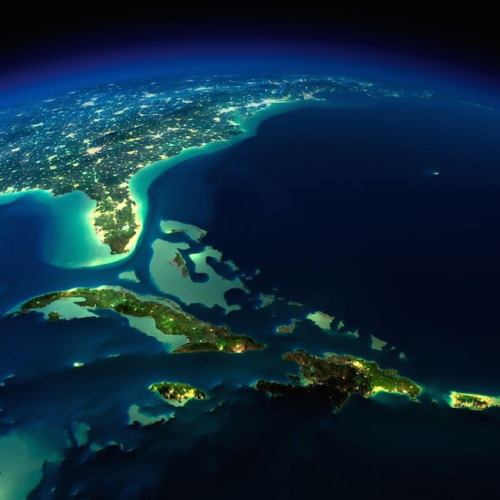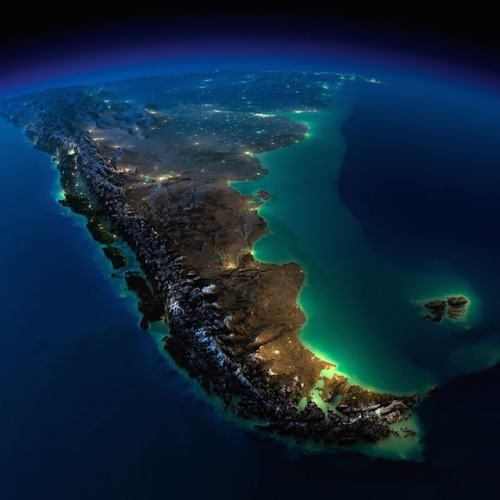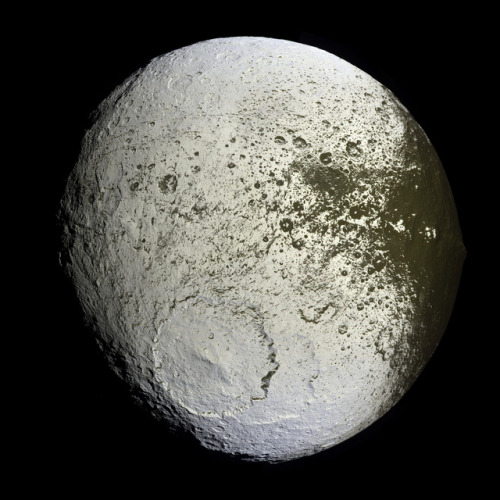Pan-STARRS Solves The Biggest Problem Facing Every Astronomer






Pan-STARRS solves the biggest problem facing every astronomer
“The science that came out of it alone is staggering. Nobody has had as much astronomical data in all of history as what Pan-STARRS has produced. They’ve discovered about 3,000 new near-Earth objects; tens of thousands of asteroids in the main belt, approximately 300 Kuiper belt objects (about a third of all the Kuiper belt objects ever discovered), and imaged a total of more than three billion verified objects. For those of you wondering, there’s no evidence for or against Planet Nine in the data, but the Pan-STARRS data does support that our Solar System ejected a fifth gas giant in its distant past.”
If you want to observe the night sky, it’s not quite as simple as pointing your telescope and collecting photons. You have to calibrate your data, otherwise your interpretation of what you’re looking at could be skewed by gas, dust, the atmosphere or other intervening factors that you’ve failed to consider. Without a proper calibration, you don’t know how reliable what you’re looking at is. The previous best calibration was the Digitized Sky Survey 2, which went down to 13 millimagnitudes, or an accuracy of 1.2%. Just a few weeks ago, Pan-STARRS released the largest astronomy survey results of all-time: 2 Petabytes of data. It quadruples the accuracy of every calibration we’ve ever had, and that’s before you even get into the phenomenal science it’s uncovered.
Come learn how it’s solved the biggest problem facing every astronomer, and why observational astronomy will never be the same!
More Posts from Drunkscience4u and Others

Researchers at King’s College London found that the drug Tideglusib stimulates the stem cells contained in the pulp of teeth so that they generate new dentine – the mineralised material under the enamel.
Teeth already have the capability of regenerating dentine if the pulp inside the tooth becomes exposed through a trauma or infection, but can only naturally make a very thin layer, and not enough to fill the deep cavities caused by tooth decay.
But Tideglusib switches off an enzyme called GSK-3 which prevents dentine from carrying on forming.
Scientists showed it is possible to soak a small biodegradable sponge with the drug and insert it into a cavity, where it triggers the growth of dentine and repairs the damage within six weeks.
The tiny sponges are made out of collagen so they melt away over time, leaving only the repaired tooth.

Primitive plants are the latest forms of Earth life to show they can survive in the harshness of space, and for many months. Cold-loving algae from the Arctic Circle have joined the space-travelling club, alongside bacteria, lichens and even simple animals called tardigrades.
Preliminary studies of the algae after their return to Earth from the International Space Station lend some weight to the “panspermia” theory, that comets and meteorites could potentially deliver life to otherwise sterile planets. The results also provide insights into the potential for human colonies on distant planets to grow crops brought from Earth.
The algae were of the Sphaerocystis species, codenamed CCCryo 101-99, and were returned to Earth in June last year after spending 530 days on a panel outside the ISS. While space-borne, they withstood the vacuum, temperatures ranging from -20 °C at night to 47.2 °C during the day, plus perpetual ultraviolet radiation of a strength that would destroy most life on Earth if not filtered out by the atmosphere.
“I’m sure that plants of many kinds have been on the ISS before, but on the inside, not the outside,” says Thomas Leya of the Fraunhofer Institute for Cell Therapy and Immunology in Potsdam, Germany, who organised the algae experiment. “As far as I know, this is the first report of plants exposed on the surface of the space station.”
Continue Reading.

A Visualisation of the Recent Rapid Change in Temperature.
(GreenPeace)
The team behind Beauty of Science decided to explore the four seasons in this video combining macro footage of crystal growth, chemical reactions, and fluid dynamics. It’s always a fun game with videos like this to try and guess exactly what makes the mesmerizing patterns we see. Are those blue streaming waves in Spring caused by alcohol shifting the surface tension in a mixture? Are the dots of color welling up in Autumn a lighter fluid bursting up from underneath a denser one? As fun as the visuals are, though, what really made this video stand out for me was its excellent use of “The Blue Danube” to tie everything together. Check it out and don’t forget the audio! (Video credit: Beauty of Science; via Gizmodo)




We've got a new trailer! Doesn't this get you even MORE excited (DontThinkAboutItJustAdmitUAre)! March 4! Check out the trailer and subscribe to the link in the bio so that you don't miss out!! #drunk #science #drunkscience #funny #slime http://ift.tt/2l0tywB
-
 lutefisk-kingdom liked this · 6 years ago
lutefisk-kingdom liked this · 6 years ago -
 boscothemigh liked this · 8 years ago
boscothemigh liked this · 8 years ago -
 can-i-cant-i reblogged this · 8 years ago
can-i-cant-i reblogged this · 8 years ago -
 can-i-cant-i liked this · 8 years ago
can-i-cant-i liked this · 8 years ago -
 littleplasticspaceship reblogged this · 8 years ago
littleplasticspaceship reblogged this · 8 years ago -
 inconstantsearchofperfection liked this · 8 years ago
inconstantsearchofperfection liked this · 8 years ago -
 cyclosma reblogged this · 8 years ago
cyclosma reblogged this · 8 years ago -
 astrolestial-moved-blog reblogged this · 8 years ago
astrolestial-moved-blog reblogged this · 8 years ago -
 belgaer liked this · 8 years ago
belgaer liked this · 8 years ago -
 drunkscience4u reblogged this · 8 years ago
drunkscience4u reblogged this · 8 years ago -
 penguintwins liked this · 8 years ago
penguintwins liked this · 8 years ago -
 stainedglasssunsets liked this · 8 years ago
stainedglasssunsets liked this · 8 years ago -
 termytherednosedbutterfly-blog reblogged this · 8 years ago
termytherednosedbutterfly-blog reblogged this · 8 years ago -
 waibelrd liked this · 8 years ago
waibelrd liked this · 8 years ago -
 freshbasementdestiny-blog reblogged this · 8 years ago
freshbasementdestiny-blog reblogged this · 8 years ago -
 freshbasementdestiny-blog liked this · 8 years ago
freshbasementdestiny-blog liked this · 8 years ago -
 havewecomethisfartocomethisfar reblogged this · 8 years ago
havewecomethisfartocomethisfar reblogged this · 8 years ago -
 havewecomethisfartocomethisfar liked this · 8 years ago
havewecomethisfartocomethisfar liked this · 8 years ago -
 bearhearte-blog liked this · 8 years ago
bearhearte-blog liked this · 8 years ago -
 lesmismignon liked this · 8 years ago
lesmismignon liked this · 8 years ago -
 synopsisroll-blog liked this · 8 years ago
synopsisroll-blog liked this · 8 years ago -
 ezpaaa liked this · 8 years ago
ezpaaa liked this · 8 years ago -
 peacelovesweets liked this · 8 years ago
peacelovesweets liked this · 8 years ago -
 um-yeaaaa liked this · 8 years ago
um-yeaaaa liked this · 8 years ago -
 sstarsapphic liked this · 8 years ago
sstarsapphic liked this · 8 years ago -
 not-that-into-labels liked this · 8 years ago
not-that-into-labels liked this · 8 years ago -
 nanabumi liked this · 8 years ago
nanabumi liked this · 8 years ago -
 coffee-and-vroomvroom reblogged this · 8 years ago
coffee-and-vroomvroom reblogged this · 8 years ago -
 spacetimewithstuartgary reblogged this · 8 years ago
spacetimewithstuartgary reblogged this · 8 years ago -
 poke-approved reblogged this · 8 years ago
poke-approved reblogged this · 8 years ago -
 whatyourcatdraggedout liked this · 8 years ago
whatyourcatdraggedout liked this · 8 years ago -
 messiestobjects reblogged this · 8 years ago
messiestobjects reblogged this · 8 years ago
The official page of Drunk Science! An enthusiastic host performs simple experiments and then humorously explains the science behind the result, all while visibly drunk.
126 posts

















